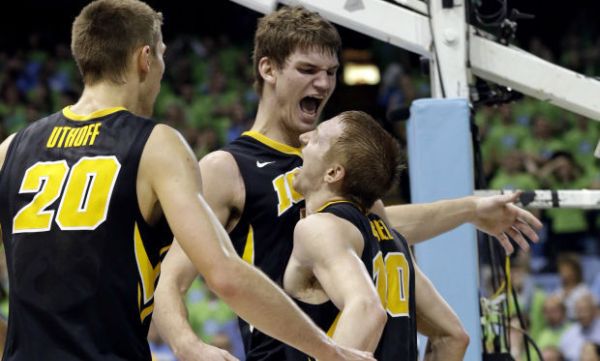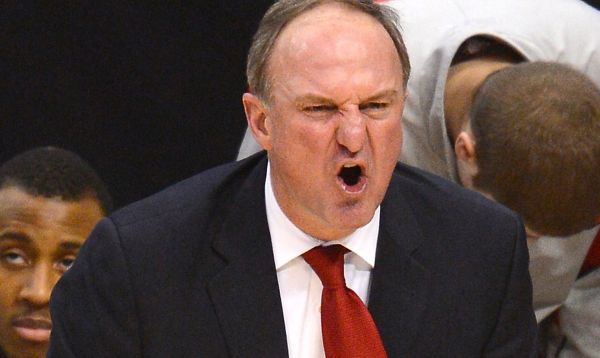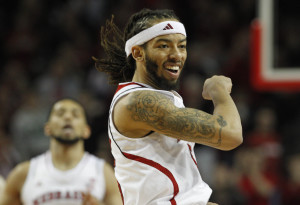Iowa’s Recipe for Surviving Without Aaron White
Posted by Patrick Engel on November 10th, 2015Fran McCaffery built Iowa from Big Ten bottom-feeder into NCAA tournament team in three years. The Hawkeyes have now reached the Big Dance in two straight seasons and blew out Davidson in their most recent appearance. The challenge this winter will be to replace three seniors, most notably first-team all-Big Ten selection Aaron White. Repeating last year’s 12-6 conference record will probably be difficult with White, Josh Oglesby and Gabriel Olaseni all gone. While Iowa may be a notch below a slew of teams with legitimate Big Ten title aspirations, it’s still a threat in the league that shouldn’t be taken lightly. Here’s the recipe for Iowa to reach March Madness without its superstar, White.

Iowa seniors (from left) Jared Uthoff, Adam Woodbury and Mike Gesell will be a major part of the team’s core this year after the loss of Aaron White. (Photo: AP)
- An experienced, talented frontcourt: White is gone, but Jared Uthoff became a star playing next to him and earned a third-team all-conference selection last year. Now, the former Wisconsin forward is ready to be the go-to scorer. Last season, he shot a higher percentage from three than White (37.2 to White’s 35.6), tied for the team lead in blocks per game (1.6) and turned the ball over a minuscule 10 percent of the time. Frontcourt running mate Adam Woodbury may not score a lot, but the 7-footer is a tough defender who cleans up on the glass well (5.2 rebounds per game in just 20.5 minutes in 2014-15). Junior college transfer Dale Jones will provide depth off the bench, filling the role that Olaseni did last season.











































